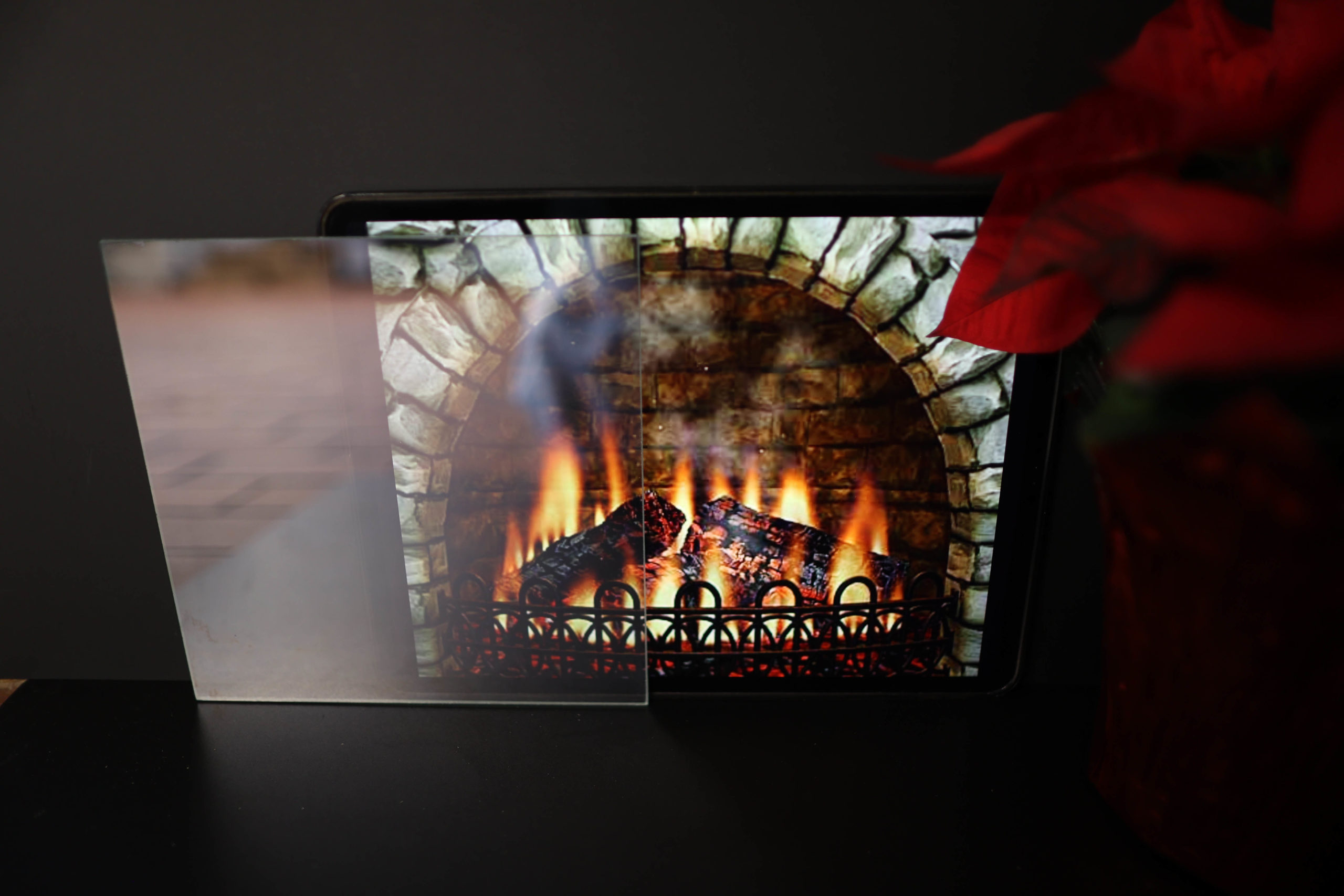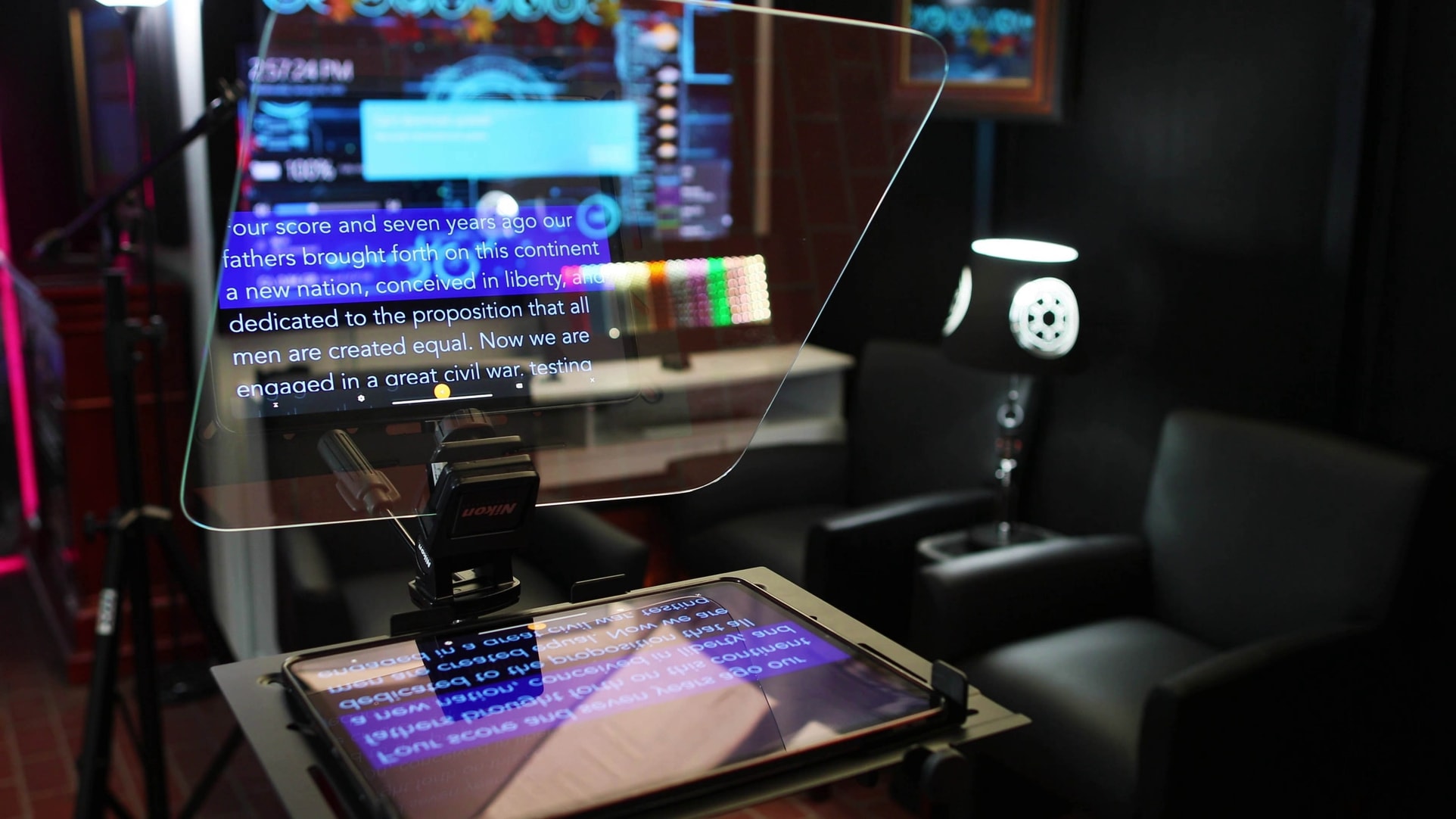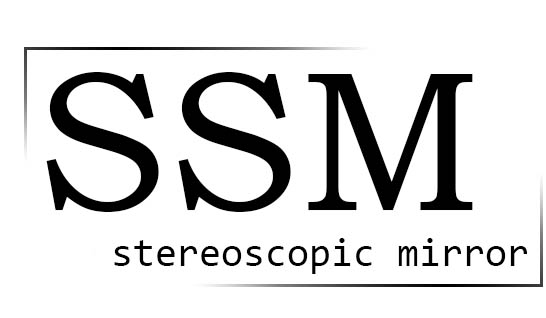Have you ever heard of beamsplitter mirrors? These unique mirrors are also known as transparent mirrors or “beam splitter” mirrors and have optical grade dielectric coating on the face of the mirror which reflects the amount of light you specify. They are used in a wide range of applications and offer a number of benefits over traditional mirrors.
Beamsplitter mirrors are a special type of mirror that is designed to reflect a specific amount of light while also allowing some light to pass through. This is achieved through the use of a dielectric coating on the face of the mirror which reflects a specific amount of light, while also allowing some light to pass through. The coating is applied to low-iron glass to minimize tint, and an anti-reflective coating on the backside eliminates the double reflection seen in regular mirrors.
One of the primary benefits of beamsplitter mirrors is their ability to reflect a specific amount of light while also allowing some light to pass through. This makes them ideal for use in applications where you need to control the amount of light that is reflected or transmitted. They are commonly used in scientific and medical applications, as well as in photography and video production.

Another benefit of beamsplitter mirrors is their high optical quality. Because they are made using low-iron glass and have a high-quality dielectric coating, they offer excellent clarity and minimal distortion. This makes them ideal for use in applications where image quality is important.
Finally, beamsplitter mirrors are also highly durable and long-lasting. They are resistant to scratches, abrasions, and other forms of wear and tear, making them an ideal choice for use in harsh environments.
Beamsplitter mirrors are used in a wide range of applications, including scientific and medical research, photography and video production, and industrial applications. They are also used in a number of consumer products, including cameras, telescopes, and microscopes.
What are Beamsplitters used for?
In scientific and medical research, beamsplitter mirrors are used to control the amount of light that is reflected or transmitted, allowing researchers to study the behavior of light and its interaction with various materials.
In photography and video production, beamsplitter mirrors are used to control the lighting in a scene, allowing photographers and videographers to create a specific look or feel.
In industrial applications, beamsplitter mirrors are used to inspect and analyze materials, as well as to control the lighting in a manufacturing environment.
Beamsplitter mirrors are a unique and versatile type of mirror that offer a number of benefits over traditional mirrors. They are highly durable, offer excellent optical quality, and are used in a wide range of applications. Whether you are a scientist, photographer, or industrial manufacturer, beamsplitter mirrors are an ideal choice for controlling the amount of light that is reflected or transmitted.
How does Beamsplitter transparency work?
Understanding Stereoscopic Mirrors and Thicknesses
Stereoscopic mirrors are a critical component in many optical systems, including teleprompters, camera rigs, and scientific instruments. They work by reflecting part of the light while allowing the rest to pass through, making them an essential tool for controlling light in many applications.
However, not all stereoscopic (or beamsplitter) mirrors are created equal. Different mirrors have different ratios of reflection and transmission, and they come in various thicknesses and shapes. In this article, we’ll explore the different options available and help you make an informed decision when choosing a beamsplitter mirror.
Stereoscopic Mirror Ratios
Stereoscopic mirrors are available in different ratios of reflection and transmission. The most common ratios are 30R/70T, 40R/60T, and 50/50. The numbers represent the percentage of light that is reflected and transmitted, respectively. For example, a 30R/70T mirror reflects 30% of the light and transmits 70%.
The choice of ratio depends on the application. For teleprompters, a 70T mirror is typically preferred because it allows more light to pass through, making it easier to read the text. In contrast, for scientific instruments, a 50/50 mirror may be preferred to evenly split the light.
Thicknesses
Beamsplitter mirrors are available in different thicknesses, typically 2mm, 3mm, and 4mm. Optically, they are practically the same, so the choice of thickness depends on other factors.
Shapes and Sizes
Stereoscopic mirrors are available in different shapes, including standard and rounded corners. Standard corners are ideal for the best price and going in a frame. Rounded corners offer a stylistic advantage when the edges are exposed and avoid getting snagged, for example, in a presidential teleprompter.

30R/70T Stereoscopic Dielectric Glass
What is 30% Reflective and 70% Transparent Glass?
30% reflective and 70% transparent glass, also known as semi-reflective glass, is a type of glass that allows some light to pass through it while reflecting the rest. This glass is made by applying a special coating to one side of the glass panel, which creates a partially reflective surface. The coating is usually made of metal or metal oxide, such as silver or titanium dioxide.
What is 30% Reflective and 70% Transparent Glass Used For?
This type of glass is commonly used for teleprompters, which are devices that display text for a speaker or presenter to read while looking at the camera. The semi-reflective glass allows the text to be displayed on the screen while also reflecting the camera lens, making it appear as if the speaker is looking directly at the audience.
30% reflective and 70% transparent glass is also used in scientific instruments, such as microscopes and spectrometers. The semi-reflective surface allows the instrument to capture and analyze light while also allowing the user to see the sample being studied.
Other applications of this glass include security mirrors, observation decks, and privacy screens.
Advantages of 30% Reflective and 70% Transparent Glass
One of the main advantages of this type of glass is its ability to provide both transparency and reflection, which makes it useful for a wide range of applications. The semi-reflective surface also reduces glare and improves contrast, making it easier to read text or see details in scientific samples.
Another advantage of this glass is its durability and resistance to scratches and other damage. The special coating on the glass panel protects it from wear and tear, ensuring a long-lasting and reliable performance.

40R/60T Stereoscopic Dielectric Glass
30R/70T and 40R/60T are both options for stereoscopic glass. The first set of numbers represents the percentage of reflection, while the second set represents the percentage of transparency. 30R/70T is less reflective, while 40R/60T is slightly more reflective, but still provides excellent transparency.
Most clients choose 40R/60T because it offers a good balance between reflection and transparency. However, manufacturers and enthusiasts may have specific requirements for their camera units or projects, and we offer both options to accommodate those needs. Ultimately, the choice between 30R/70T and 40R/60T depends on the specific needs and preferences of the user.
Applications
- Pepper’s Ghost Illusion
- Hidden Television
- Mirror Photo Booths
- Optical Illusions
- Scientific Research
- Infinity Mirrors
- Teleprompters
- Holograms
- Camera Lucida
- 3D Camera Rigs
- Art Installations
- Lasers
Features
- Maximum Size: 96″ x 126″
- Temperable Pyrolytic Coating
- One Side Transparent
- Clear Glass Substrate
- Thicknesses: 5/32″ (4mm), 1/8″ (3mm) & 5/64″ (2mm)
- 30R/70T, 40R/70T, & 50R/50T
- Can be laminated
- Cutting Accuracy +/- 1/16″
